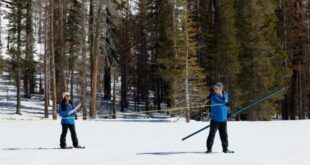Although Water Year (WY) 2017 was the second-wettest year on record for California, WY 2018 wrapped up on Sunday with below-average precipitation. On Monday, the California Department of Water Resources (DWR) released its annual water year summation called “Water Year 2018: Hot and Dry Conditions Return” available at: https://water.ca.gov/-/media/DWR-Website/Web-Pages/News-Releases/Files/Water-Year-2018.pdf?la=en&hash=D3D6B7759B88040BC6A954231490845B5B393B7F.
While conditions overall were dry, most California reservoirs are storing near-or-above-average levels of water heading into WY 2019. California also experienced sporadic periods of significant precipitation in WY 2018 including an atmospheric river event in April which brought new records for precipitation though most of it fell as rain not snow. Though the event was short, it produced the tenth largest flood on the Merced River, impacting Yosemite National Park. Water experts continue to tell Californians to expect fluctuating weather patterns in the years to come in part due to climate change and increasing temperatures. Californians need to be prepared for the possibility of both wet and dry years through emergency preparedness plans versus conservation and water-savings methodologies, respectively.
“California experiences significant variability in seasonal precipitation,” said DWR Director Karla Nemeth. “The recent record-breaking drought was followed by the second-wettest year on record in 2017, followed by another dry year. Climate change models predict extreme variability in precipitation to be the new norm, which requires us to be ever more vigilant in our flood and drought preparedness.”
Highlights from DWR’s annual WY 2018 recap include the following:
- The April 1 statewide snowpack based on over 260 snow courses was just 58 percent of average for water year 2018, a dramatic drop from 159 percent of average for the same date in 2017.
- The water year coincided with ongoing warming conditions, setting new records this summer for maximum temperatures in the South Coast region.
- Much of Southern California ended up with half or less than half of average annual precipitation.
- WY 2018 is indicative of California’s ongoing transition to a warmer climate, which after years of extreme variability in annual precipitation, resulted in record-breaking wildfires.
 California Water News Daily Your Source For Water News in California
California Water News Daily Your Source For Water News in California


